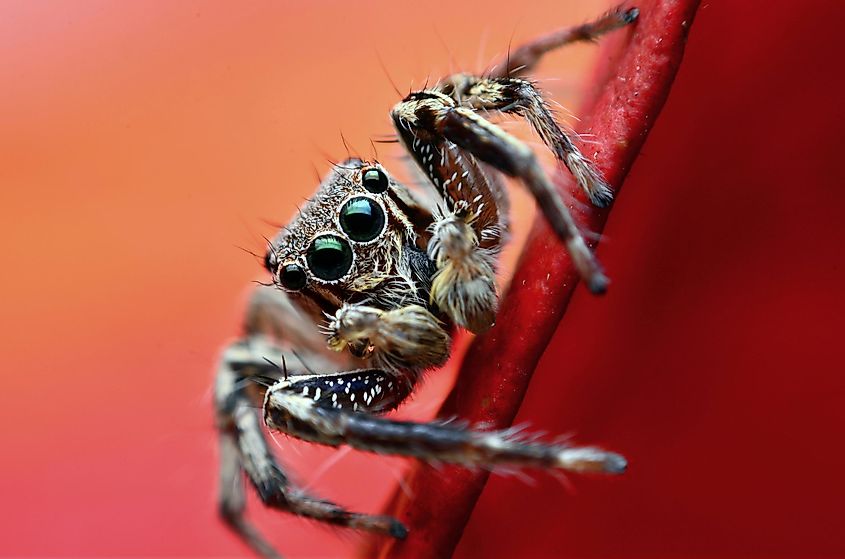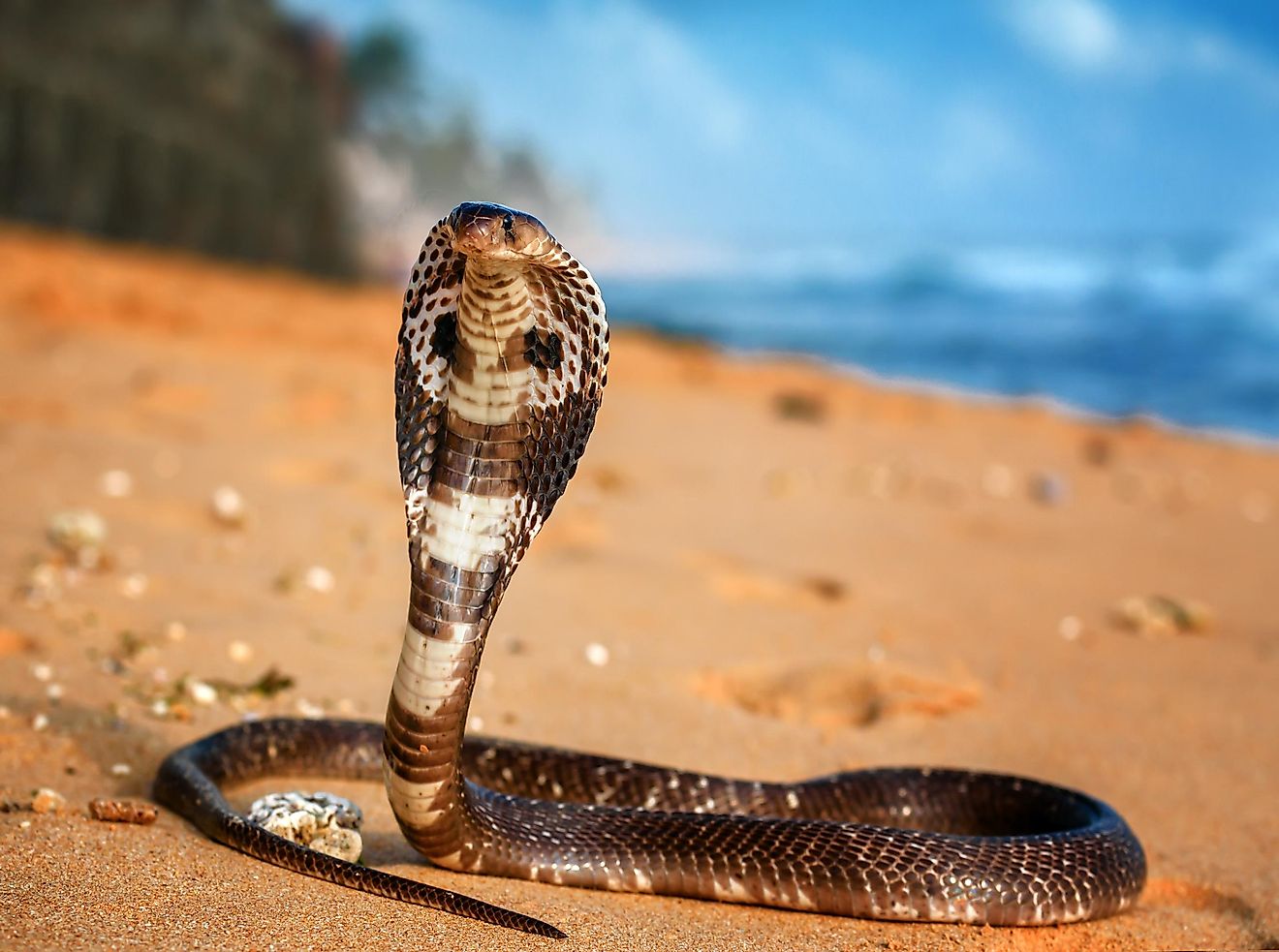
How Many Legs Does A Spider Have?
There are over 50,000 known species of spiders on this planet, and all of them have eight legs. With that said, the one notable caveat with these arachnids is that many of them (up to a certain point in their lives) can regrow lost limbs. Therefore, it is not uncommon for an individual spider to have only six or seven legs, but this would be due to injury, and is not indicative of a special trend or aberrant speciation. Let's have a closer look at why these crawling, jumping, web-slinging critters are built in such a way.
Spider Taxonomy

- Kingdom: Animalia
- Phylum: Arthropoda
- Subphylum: Chelicerata
- Class: Arachnida
- Order: Araneae
- Suborder: Mesothelae (i.e. Segmented spiders)
- Suborder: Opisthothelae (All other spiders)
- Infraorder: Mygalomorphae (i.e. "Ancient" spiders)
- Infraorder: Araneomorphae ("Modern" spiders)
The full scientific classification varies depending on the particular spider in question. According to the World Spider Catalog Association (WSCA), as of April 15th, 2024, there are an estimated 52,075 species of spiders. They can be subdivided into 4,380 genera and 135 families.
Spider Anatomy

Body Segments
The bodies of spiders can be categorized into two main parts. The opisthosoma is commonly referred to as the abdomen. This back segment contains the heart, silk glands and spinnerets, digestive tubes, excretory system, reproductive system, and respiratory system (i.e. book lungs). The cephalothorax, aka prosoma, is commonly called the "head." This front portion is what all eight legs connect to, and also contains the brain, eyes, a continuation of the digestive system, venom glands (note: all spiders possess venom), etc.
Leg Parts
Each of a spider's eight legs contain six joints, giving us eight distinct parts to acknowledge. From base to tip, these include: the coxa, trochanter, femur, patella, tibia, metatarsus, tarsus, and pretarsus, aka tarsal claw. Several of these are likely to ring a bell since human anatomy shares significant overlap, such as the femur (upper leg), patella (knee), and tibia (lower leg).
Why Do Spiders Have Eight Legs?

Lineage
In order to understand modern spider morphology, one must cast back into the past and analyze their evolutionary lineage. Spiders are arthropods, meaning they have jointed exoskeletons and segmented bodies. The earliest known common ancestor to all extant arthropods is the ocean-dwelling lobopod, which reigned approximately 541 million years ago during the Ediacaran period. Lobopod is actually a general term for a wide variety of worm-like species that had pairs of legs attached to each section of their segmented bodies.
Roughly 500 million years ago - during a timeframe known as the Cambrian period - the chelicerate lineage (of which the group of arthropods that eventually spawned spiders) branched off. The first versions of chelicerates saw the fusing of their smaller body parts into two main segments: the head and abdomen. Thanks to the slow, incorrigible, and sometimes befuddling forces of natural selection, the head kept the legs (which, ultimately, were appendages that stemmed from the mouth), whereas the abdomen ditched them. Insects (another branch of arthropods), by contrast, have appendages on their head, thorax, and abdomen.
Spiders began to show up in the fossil record about 315 million years ago (i.e. still in the thick of the Cambrian period). So by that point, their body plan had been preordained for hundreds of millions of years.
Function
Even though the exact evolutionary, body-sculpting factors are not known, the function of a spider's eight legs is fairly evident. For starters, having eight legs is highly-advantageous when it comes to speedy and versatile locomotion. Spiders are efficient crawlers at any angle, and across almost any surface (including, in some cases, over water). Spiders also utilize the pretarsus (i.e. the most distal part of the leg) to help them weave their complex webs. Additionally, the tactile receptors in their legs help them to gain valuable information about their physical environment, such as the whereabouts of predators and prey, and moisture levels. This is important because even though spiders also have eight eyes (usually), their vision is not particularly good.
Finally, spiders use their arsenal of legs for hunting, self-defense, and even mating. In terms of the latter, the Sydney funnel-web spider (i.e. the most venomous spider in the world) has a well-documented elaborate mating ritual. Along with tapping, drumming, quivering, burrow-expanding, and chasing, the iconic pose occurs when the male funnel-web spider raises and holds his front legs in the air, thereby showing off his belly and fangs, while balancing on his hind legs.
Survival
As alluded to earlier, there is also a survival component to being replete in appendages. One study found that over 10% of spiders were missing at least one leg, while another expanded the scope of that figure to 5-40%. Whatever the true number is, it is evident that spiders are able to move, hunt, and weave at a level that allows them to survive even if one or two legs has been lost/damaged. However, once three or more have been severed, adaptability does suffer significantly.
Based on these findings, it may be appropriate to think of two of a spider's eight legs as being "spares." This allows spiders to lose an aggressive battle, but still live to fight another day. In fact, in many cases, spiders are able to regenerate legs that have been partially severed. As such, younger spiders have demonstrated a willingness to amputate their own injured leg, knowing that it will grow back in time. Older spiders do not reflect this behavior, due to the state of their exoskeleton, and the resource trade-offs involved in regrowing appendages.
Are There Non-Spider Species With Eight Legs?

You bet. Spiders are but one species of arachnids, and all arachnids have eight legs. Look closely (but carefully) and you will notice that scorpions, whip scorpions, pseudoscorpions, water harvestmen, solpugids, mites, ticks, and more all possess eight legs (and other specialized appendages). While they make use of their abundant limbs in various ways, all of these creatures share a similar morphology because they share the same evolutionary lineage.
Final Thoughts
To many, spiders are nothing more than eight-legged freaks. But to those able to overcome the pervasive and primal disliking for this brand of arachnid, they may begin to see them as eight-legged friends. After all, spiders are invaluable in terms of controlling populations of unwanted insects, and they themselves serve as a vital source of food for many beloved animals higher on the food chain. Even just as standalone creatures, spiders are special because they come from a long line of remarkably-adaptable arthropods, as is evidenced first and foremost by their eight dextrous and (somewhat) expendable legs.











